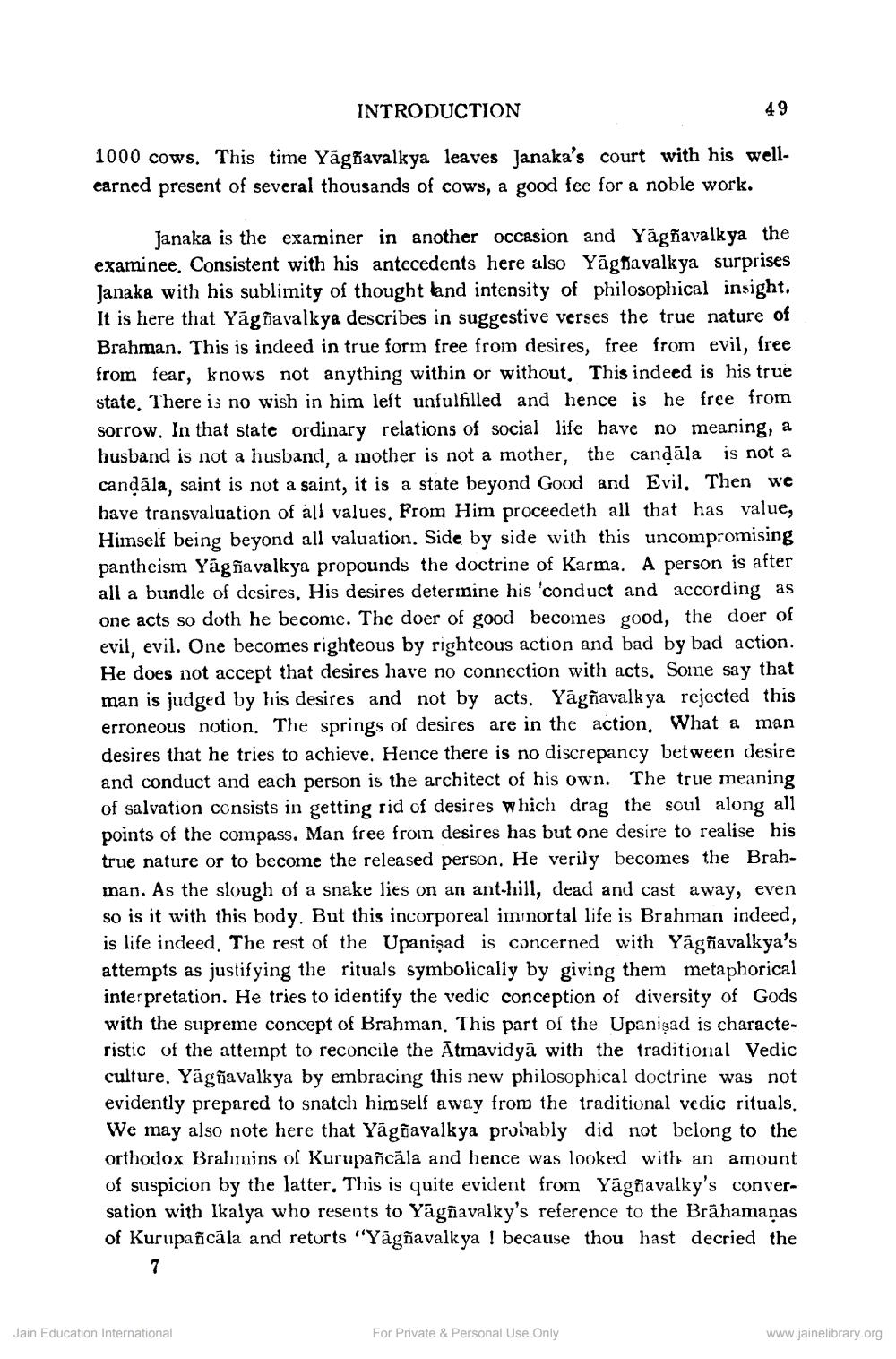________________
INTRODUCTION
49
1000 cows. This time Yāgñavalkya leaves Janaka's court with his wellearned present of several thousands of cows, a good fee for a noble work.
Janaka is the examiner in another occasion and Yágñavalkya the examinee. Consistent with his antecedents here also Yāgħavalkya surprises Janaka with his sublimity of thought and intensity of philosophical insight, It is here that Yāgñavalkya describes in suggestive verses the true nature of Brahman. This is indeed in true form free from desires, free from evil, free from fear, knows not anything within or without. This indeed is his true state. There is no wish in him left unfulfilled and hence is he free from sorrow. In that state ordinary relations of social life have no meaning, a husband is not a husband, a mother is not a mother, the candāla is not a candāla, saint is not a saint, it is a state beyond Good and Evil. Then we have transvaluation of all values. From Him proceedeth all that has value, Himself being beyond all valuation. Side by side with this uncompromising pantheism Yāgħavalkya propounds the doctrine of Karma. A person is after all a bundle of desires. His desires determine his 'conduct and according as one acts so doth he become. The doer of good becomes good, the doer of evil, evil. One becomes righteous by righteous action and bad by bad action. He does not accept that desires have no connection with acts. Some say that man is judged by his desires and not by acts. Yāgñavalk ya rejected this erroneous notion. The springs of desires are in the action. What a man desires that he tries to achieve. Hence there is no discrepancy between desire
nd conduct and each person is the architect of his own. The true meaning of salvation consists in getting rid of desires which drag the soul along all points of the compass. Man free from desires has but one desire to realise his true nature or to become the released person. He verily becomes the Brahman. As the slough of a snake lies on an ant-hill, dead and cast away, even so is it with this body. But this incorporeal immortal life is Brahman indeed, is life indeed. The rest of the Upanişad is concerned with Yágñavalkya's attempts as justifying the rituals symbolically by giving them metaphorical interpretation. He tries to identify the vedic conception of diversity of Gods with the supreme concept of Brahman. This part of the Upanişad is characteristic of the attempt to reconcile the Atmavidyâ with the traditional Vedic culture. Yägñavalkya by embracing this new philosophical doctrine was not evidently prepared to snatch himself away from the traditional vedic rituals, We may also note here that Yāgiavalkya probably did not belong to the orthodox Brahmins of Kurupancāla and hence was looked with an amount of suspicion by the latter. This is quite evident from Yägñavalky's conversation with Ikalya who resents to Yagñavalky's reference to the Brahamaņas of Kurupañicāla and retorts "Yagñavalkya ! because thou hast decried the
Jain Education International
For Private & Personal Use Only
www.jainelibrary.org




